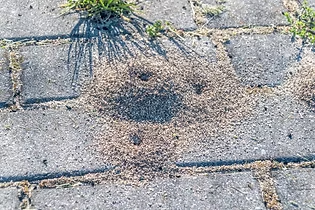
• Reliable And Trustworthy
• Responsive Proactive Solutions
• Detail-focused for lasting results
EXCELLENTTrustindex verifies that the original source of the review is Google. Great communication, on time, pleasant and thorough. Highly recommend.Posted onTrustindex verifies that the original source of the review is Google. Adam was extremely efficient in his work at our home. He provided follow up messages to confirm the inspection date & arrived on time. Adam explained all the details involved with the pest inspection & the expected timeframe. Once the work was completed, Adam called & discussed his report & outcomes. I felt completely comfortable with Adam being in our home & he has a quiet yet confident manner. I can highly recommend Adam for any pest inspection required.Posted onTrustindex verifies that the original source of the review is Google. Can't recommend Adam and his team enough, they were super reliable and carried out their work with utmost professionalism. Thank you again for taking car of my mother in laws place, we will definitely be using you again! 🙂Posted onTrustindex verifies that the original source of the review is Google. I would highly recommend Adam at Vital Pest Control for his friendly customer service, extensive knowledge and fantastic and thorough work. We have used Vital Pest Control for a few years and are always very happy with the quality and longevity of the spray. Adam is always happy to provide information about service and products and is on time and efficient.Posted onTrustindex verifies that the original source of the review is Google. As a first time home buyer we used Adam prior to us moving in He was prompt, thorough, professional and easy to work with Can 100% guarantee I will be using him againPosted onTrustindex verifies that the original source of the review is Google. Adam was amazing very professional he explained everything and was very thorough taking great care in providing a professional service. I would highly recommend.Posted onTrustindex verifies that the original source of the review is Google. Have used well known pest contoll for over ten years. Recently standard of their work had fallen. Rang adam at vital pest control. Could not reccomend him highly enough. Thankyou adam and we will see you in twelve months. Mark and julie hillPosted onTrustindex verifies that the original source of the review is Google. Quick reliable service, highly recommend looking fwd to our next annual servicePosted onTrustindex verifies that the original source of the review is Google. Punctual, good job done & very friendly service.Posted onTrustindex verifies that the original source of the review is Google. Highly recommend. Turned up on time and provided a great and efficient service. We are due for another spray soon and will definitely get them back as we haven’t had a pest issue since the last visit.
Discover expert Pest and Insect Identification On The Central Coast NSW with Vital Pest Control. We offer reliable services to tackle local pest issues. Our detail-focused approach ensures lasting results. Let us help you maintain a pest-free home.
Common Cockroach Species
Identify and control cockroaches effectively. Our team recognises species common to Central Coast homes. We provide solutions that are both reliable and trustworthy, ensuring your space remains cockroach-free.
Locating Spider Hotspots
Spiders thrive in hidden spaces. We locate and eliminate spider hotspots using proactive solutions. This keeps your family safe and your home comfortable.
Ant Infestations
Ants can invade quickly. Our responsive methods target sources, providing immediate relief. We focus on long-term solutions to prevent re-infestations in your home.
Wasp Recognition and Identification
Wasps pose threats when nesting near homes. We identify and remove wasp nests safely. Our experts ensure peace of mind and safety for your family.
Fighting Flea Infestations
Fleas can disrupt comfort. Our targeted treatments eradicate fleas effectively. Vital Pest Control ensures a comfortable living environment for your home.
Property Damaging Termites
Termites cause costly damage. Our detail-focused inspections identify termite activity early. We implement solutions to protect your property from structural harm.
Disease Transmitting Rodents
Rodents spread diseases and damage properties. Our methods swiftly address infestations. We provide safe solutions to keep your home rodent-free.
Preventing Costly Possum Damage
Possums can damage homes. We offer humane removal and prevention strategies. Protect your home and avoid costly repairs with our expert help.
Discover how we can help you today! Visit our Contact page for more information.
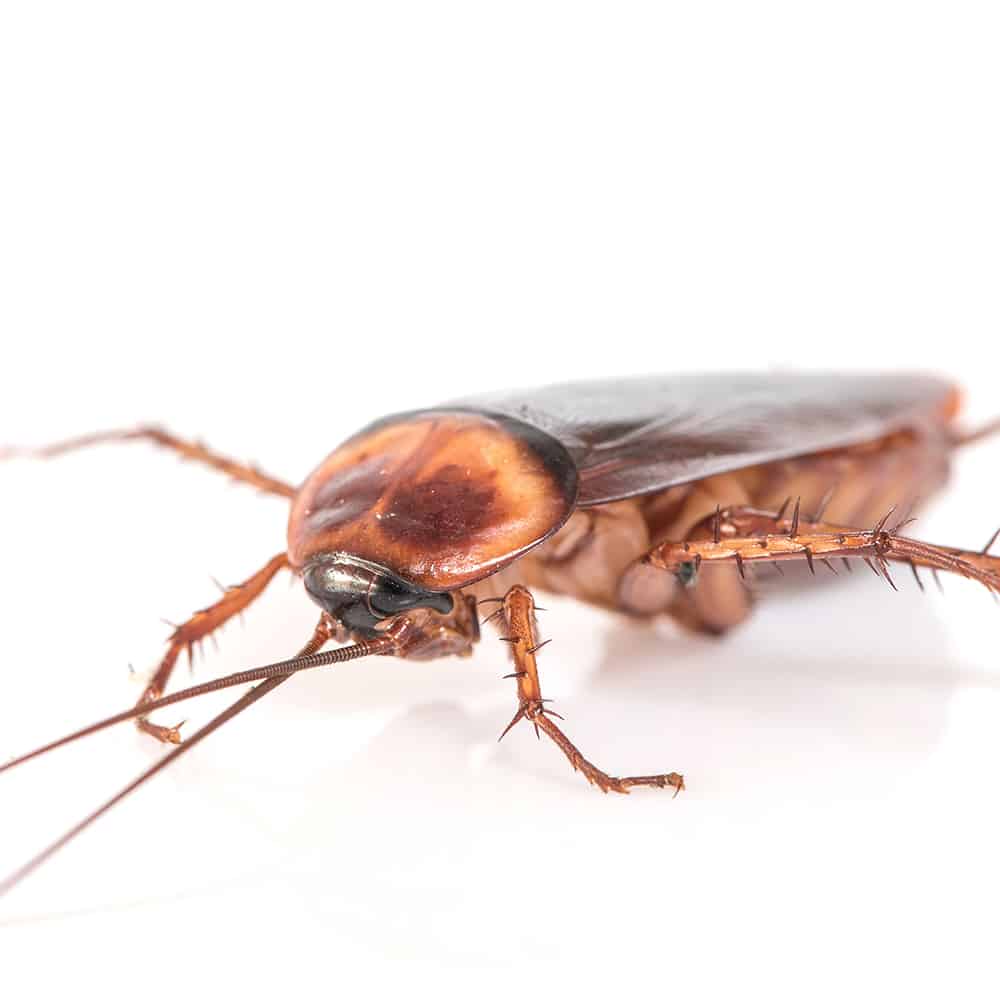
Struggling with pest and insect identification on the Central Coast NSW? Vital Pest Control can help!
On the Central Coast of NSW, cockroaches are a common concern for homeowners and businesses alike. These pests not only cause discomfort but can also pose health risks. Understanding the common species in this region can aid in effective pest control. Here we delve into the most frequently encountered cockroach species in this area.
German Cockroach
The German cockroach is a small, light brown species that thrives in warm, moist environments. Known for their quick reproductive cycle, they often invade kitchens and bathrooms. These cockroaches prefer to hide during the day in cracks and crevices, emerging at night to feed on a wide variety of foods. Their presence is often indicated by a distinct musty odour and droppings that resemble black pepper.
American Cockroach
American cockroaches are the largest of the common species found on the Central Coast. Recognisable by their reddish-brown colour and yellowish figure-eight pattern on the back of the head, they prefer warm, dark, and moist areas. Often found in sewers, basements, and drains, these cockroaches are also adept at flying. Their diet is diverse, including decaying organic matter, which makes them resilient and hard to control once established.
Australian Cockroach
The Australian cockroach is similar in appearance to the American cockroach but slightly smaller and with yellow edges on the thorax and wings. Commonly found outside in gardens or under bark, they can enter homes in search of food. They are known to feed on plants and are often seen in greenhouses, making them a concern for gardeners on the Central Coast. Despite their name, they are not native to Australia.
Oriental Cockroach
Oriental cockroaches are dark brown to black and have a preference for cool, damp environments. They are less common indoors than other species but can be found in basements, crawl spaces, and drains. Known for their sluggish movement, they are often easier to catch but still pose significant hygiene risks due to their preference for decaying organic matter.
Recognising these common cockroach species is the first step in implementing effective pest control measures. Whether dealing with German, American, Australian, or Oriental cockroaches, understanding their habits and habitats will aid in keeping them at bay on the Central Coast. Taking preventive measures and seeking professional assistance when necessary will help maintain a cockroach-free environment.
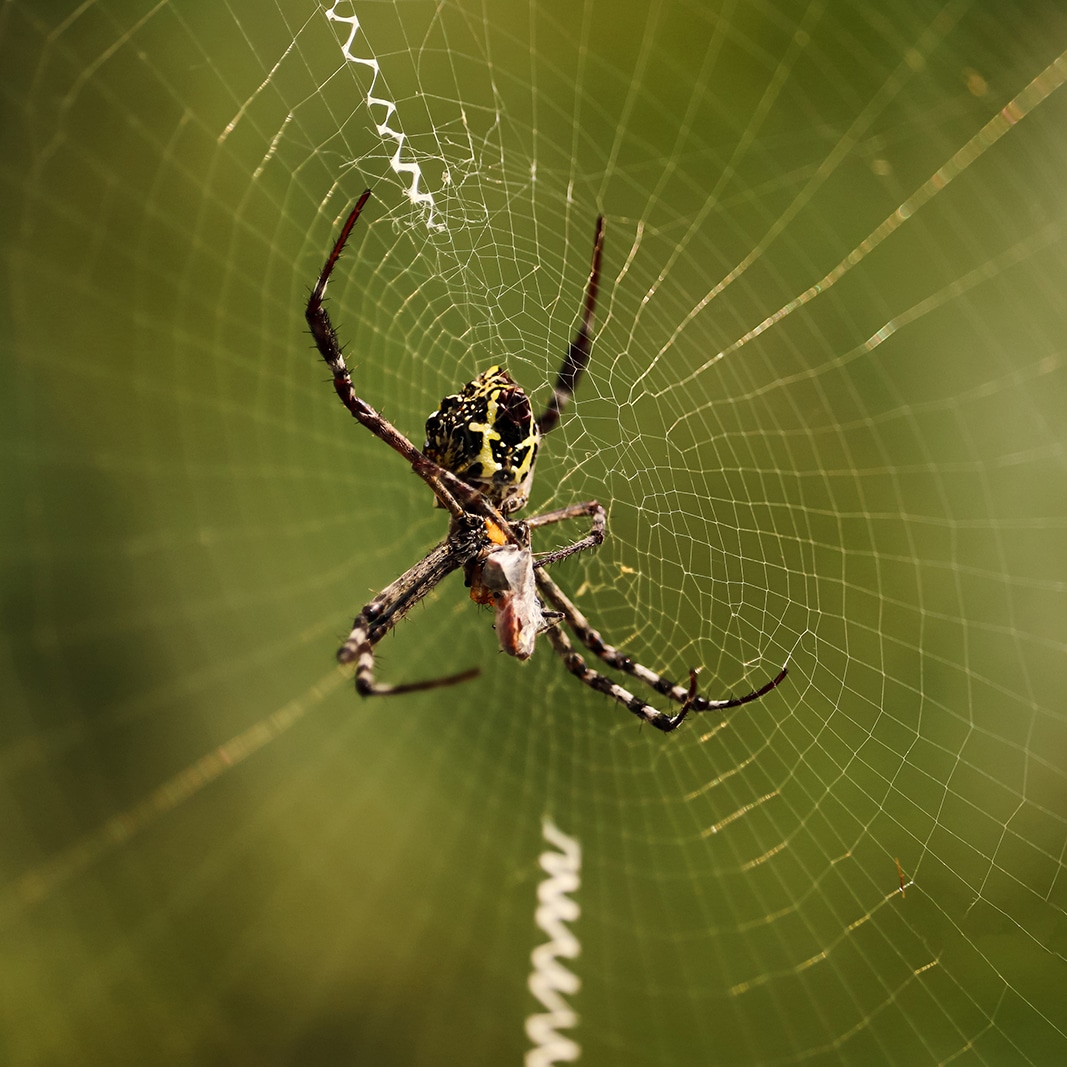
Curious about pest and insect identification on the Central Coast NSW? Vital Pest Control can help!
Locating spider hotspots on the Central Coast of NSW involves understanding the region’s unique environment. The area, known for its diverse landscapes, offers various habitats for spiders. From lush forests to sandy beaches, the Central Coast is a spider’s paradise. Identifying these hotspots can help manage unwanted encounters and appreciate the role spiders play in the ecosystem.
Understanding Spider Habitats
Spiders thrive in specific habitats depending on their species. On the Central Coast, forests provide the perfect environment for orb-weaving spiders, which build large webs between trees. These spiders prefer areas with abundant insect activity. Meanwhile, the coastal dunes and beaches attract wolf spiders, which hunt in open spaces. Recognising these habitats helps in predicting spider activity.
Exploring Urban Areas
Urban environments on the Central Coast are not devoid of spiders. Many species adapt well to human habitation. House spiders often settle in garages and sheds, where they find shelter and food. Garden areas also become hotspots as they offer both prey and hiding spots. Keeping these areas tidy can reduce spider presence, making urban living more comfortable.
Seasonal Variations
Spider activity on the Central Coast varies with the seasons. Warmer months see an increase in spider populations as they become more active. During spring and summer, gardens and parks become bustling with spider life. In contrast, cooler months drive some spiders indoors seeking warmth, leading to more encounters within homes.
Natural Attractions
The Central Coast’s natural attractions are home to many spider species. National parks, such as Bouddi and Brisbane Water, offer rich environments for spiders. These areas, with their dense vegetation and water sources, support a wide range of arachnid life. Exploring these parks can reveal fascinating spider behaviours and species diversity.
Community Awareness and Safety
Raising awareness about spider hotspots can enhance safety on the Central Coast. Educating residents and visitors about where spiders are likely to be found can prevent unwanted encounters. Simple measures, like wearing gloves when gardening or being cautious in wooded areas, can minimise risks. Understanding spiders’ ecological benefits also fosters respect and reduces fear.
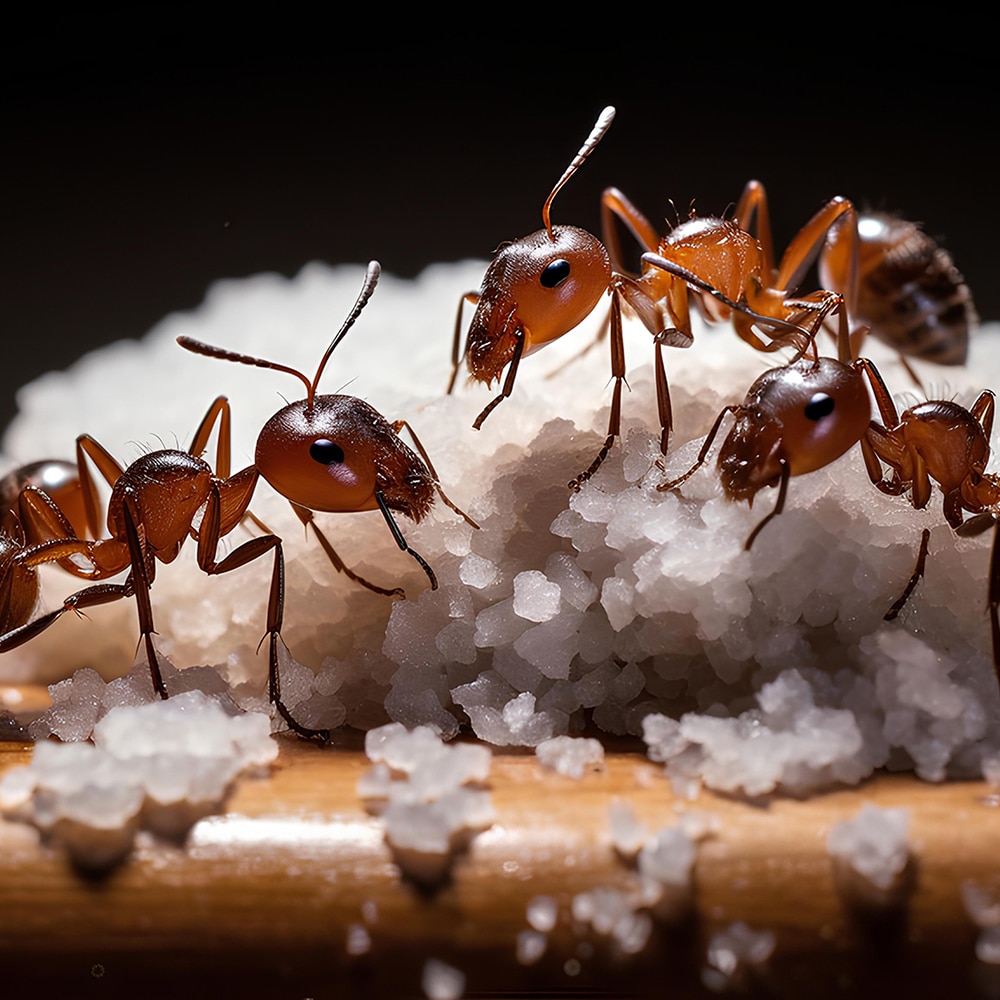
Struggling with ant infestations? Vital Pest Control excels in Pest and Insect Identification on the Central Coast NSW, ensuring effective solutions.
Ant infestations are a common issue on the Central Coast, NSW, especially during the warmer months. These tiny insects can invade homes and gardens, causing frustration for residents. Understanding their habits and knowing how to manage them can help keep your property ant-free.
Identifying Ant Species
Ants on the Central Coast vary widely, each species having unique traits. Common types include the black ant and the coastal brown ant. Identifying the species is crucial as it influences the control methods used. Observing their behaviour and nesting sites can help determine the species, aiding in effective management.
Ant Behaviour and Habitats
Ants are social creatures, living in structured colonies. They thrive in moist environments, often found in kitchens and gardens. On the Central Coast, ants favour the warm climate and readily available food sources. Understanding their search for food and how they communicate can aid in preventing infestations.
Preventative Measures
To keep ants at bay, maintain a clean environment. Regularly clean kitchen surfaces and promptly store food. Seal entry points to your home and fix any moisture issues. Gardens should be kept tidy, reducing potential ant nesting sites. These steps can significantly deter ants from invading your property.
Effective Ant Control Methods
If an infestation occurs, several control methods can be employed. Natural remedies like vinegar and lemon juice can deter ants. For larger infestations, bait stations and insecticides may be necessary. Always follow instructions carefully to ensure safe and effective use. Professional pest control services can also offer tailored solutions for severe cases.
When to Seek Professional Help
While DIY methods can manage minor infestations, persistent or large-scale issues might require expert intervention. Professionals can accurately identify ant species and implement comprehensive control strategies. Their experience and tools ensure a thorough resolution, reducing the chances of re-infestation.
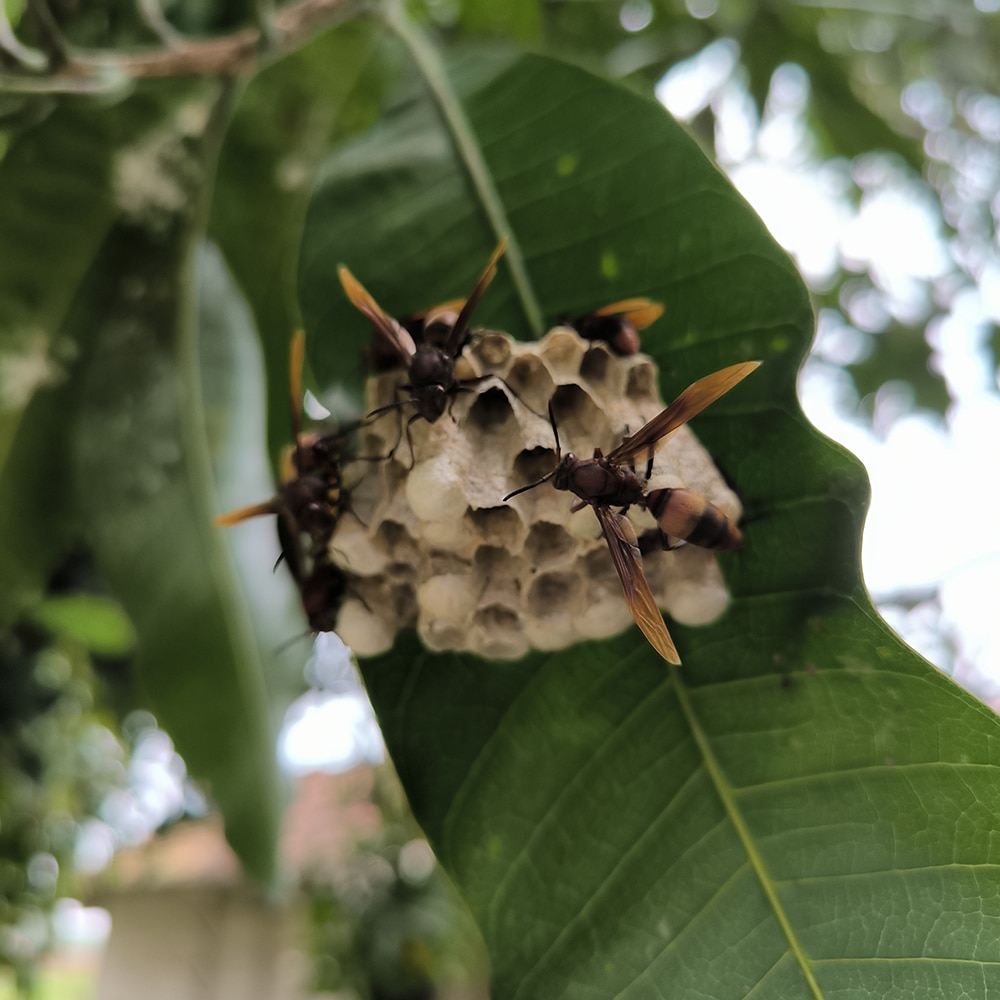
Struggling with pest and insect identification on the Central Coast NSW? Vital Pest Control can help.
Wasps are a common sight on the Central Coast of NSW, often spotted buzzing around gardens, parks, and outdoor spaces. While they play an essential role in the ecosystem, wasps can also pose risks, especially if provoked. Recognising and identifying different wasp species is crucial for ensuring safety and taking appropriate measures when necessary.
Common Wasp Species on the Central Coast
The Central Coast is home to several wasp species, each with distinct features. The European wasp, known scientifically as Vespula germanica, is one of the most prevalent. It has a yellow and black striped body and tends to nest in sheltered areas. Another species often encountered is the paper wasp, which constructs nests out of a papery material and sports a slender body with long legs. Native to the region, the Australian hornet, or Abispa ephippium, is larger and more aggressive, recognised by its reddish-brown colouring and distinctive hum.
Behaviour and Habitat
Understanding wasp behaviour can help in identifying them more effectively. Wasps are generally social creatures, living in colonies that can number in the thousands. They are most active during the warmer months when they forage for food, which includes insects and sweet substances. Nests are usually found in protected areas like roof eaves, wall cavities, or underground. Recognising these nesting sites can prevent unwanted encounters and potential stings.
Importance of Wasps in the Ecosystem
Despite their sometimes aggressive nature, wasps play a vital role in the environment. They act as natural pest controllers, preying on insects that harm crops and gardens. Wasps also contribute to pollination, albeit less efficiently than bees. By reducing the wasp population indiscriminately, we risk upsetting the ecological balance and encouraging pest outbreaks. Thus, identifying wasp species accurately is crucial for maintaining harmony in the ecosystem.
Safety Measures and Precautions
Encountering wasps can be unnerving, but taking proper precautions can mitigate risks. When near potential nesting sites, remain calm and avoid sudden movements. Wearing light-coloured clothing and avoiding strong scents can reduce the likelihood of attracting wasps. If a wasp nest is discovered, it is best to contact pest control professionals who have the expertise to manage and remove nests safely. Prompt action can prevent stings and ensure safety for everyone involved.
When to Seek Professional Help
While some wasp issues can be managed independently, professional assistance might be necessary in certain situations. Large nests or those located in difficult-to-reach areas pose increased risks and should be handled by experts. Additionally, if allergic reactions to stings are a concern, it is crucial to involve professionals equipped with the right tools and knowledge. Engaging with pest control services ensures that the problem is addressed efficiently and safely, protecting both people and property.
Adam Sands - Licenced Pest Technician
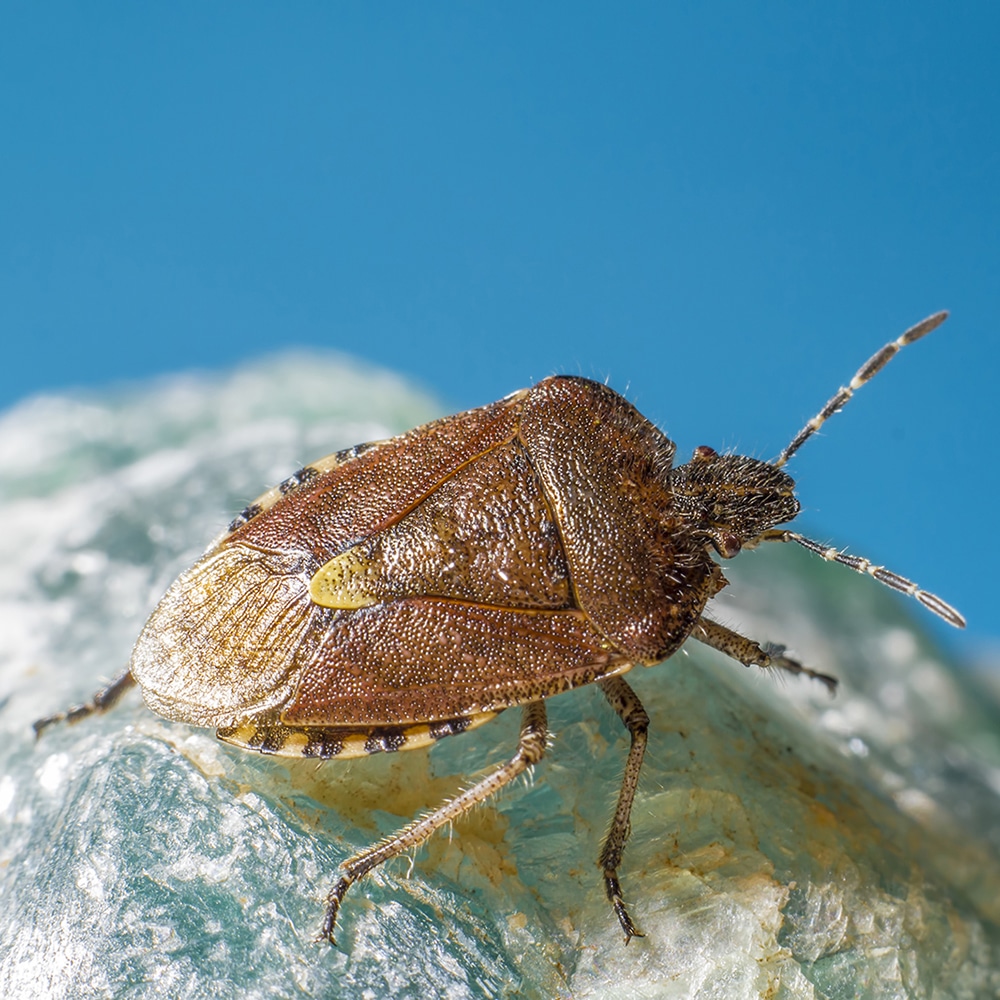
Struggling with pest and insect identification on the Central Coast NSW? Vital Pest Control can help!
Fleas can be a nuisance for homeowners on the Central Coast NSW. These pesky insects thrive in the region’s temperate climate, making it crucial to manage infestations effectively. A comprehensive approach can help keep your home pest-free and your pets comfortable.
Understanding Flea Life Cycles
Fleas go through four life stages: egg, larva, pupa, and adult. Breaking this cycle is key to successful eradication. Eggs are laid on hosts like pets but often fall into carpets and bedding. Larvae feed on organic matter before spinning cocoons to become pupae. Adults emerge when conditions are favourable, ready to feed and reproduce. Understanding these stages helps target control measures effectively.
Effective Home Cleaning Practices
Regular cleaning is essential to combat fleas. Vacuum carpets, rugs, and furniture thoroughly to remove eggs and larvae. Pay special attention to pet bedding and areas where pets frequent. Washing pet bedding in hot water can kill fleas at all stages. Frequent cleaning disrupts the flea life cycle and reduces their population significantly.
Utilising Flea Control Products
Various flea control products can aid in managing infestations. Topical treatments for pets, such as spot-on solutions, kill adult fleas and prevent eggs from hatching. Flea collars and oral medications are also effective. For home treatment, consider insect growth regulators that stop larvae from developing. Always follow product instructions carefully for best results.
Pet Hygiene and Grooming
Maintaining pet hygiene is crucial in the fight against fleas. Regular grooming helps detect fleas early and reduces their numbers. Use a fine-toothed flea comb to remove fleas and check for signs of infestation. Bathing pets with flea-specific shampoos can also help. Keeping your pets clean ensures they are less attractive hosts for fleas.
Professional Pest Control Services
When infestations are severe, professional pest control services can provide effective solutions. Pest control experts on the Central Coast NSW have experience dealing with local flea populations. They use targeted treatments that address all life stages of fleas, ensuring a thorough eradication. Professional services complement home efforts and provide long-term protection.
By employing these strategies, homeowners on the Central Coast can effectively manage flea infestations. Regular cleaning, proper use of control products, and professional help when needed ensure a flea-free environment.
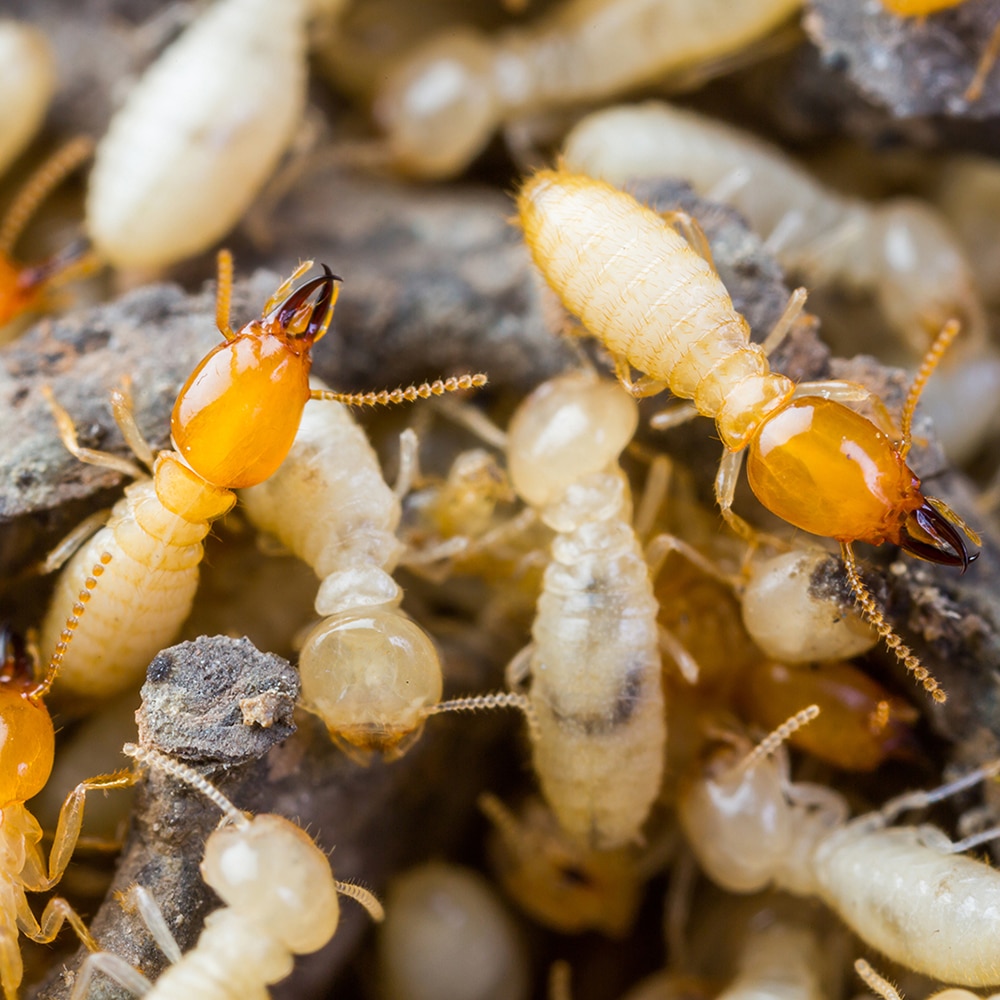
Worried about property damage? Vital Pest Control excels in pest and insect identification on the Central Coast NSW.
On the Central Coast of NSW, termites present a significant threat to property. These tiny pests can cause extensive damage to homes and buildings, leading to costly repairs. Understanding their behaviour, signs of infestation, and effective prevention methods is crucial for property owners in this region.
Understanding Termite Behaviour
Termites are social insects that live in colonies. They thrive in warm, humid climates, making the Central Coast an ideal environment. These pests feed on cellulose, commonly found in wood, paper, and other plant materials. Subterranean termites, the most common type in this area, build tunnels underground to reach their food sources. This behaviour often allows them to go unnoticed until significant damage has occurred.
Identifying Signs of Infestation
Detecting a termite infestation early can save thousands in repair costs. Look for mud tubes on walls or foundations, which termites use for protection as they travel. Hollow-sounding wood and discarded wings near windows or doors are also red flags. Regular inspections by a professional pest control service are recommended to catch infestations before they escalate.
Effective Prevention Methods
Preventing termite infestations involves a combination of proactive measures. Regularly inspect and maintain your property, focusing on areas where wood meets the ground. Reduce moisture levels around your home by ensuring proper drainage and repairing leaks. Consider using termite-resistant building materials for new constructions or renovations. Engaging a pest control specialist for regular termite inspections and treatments can also offer peace of mind.
Treatment Options for Infested Properties
If you suspect a termite infestation, immediate action is essential. Professional pest control services offer various treatment options, such as chemical barriers, baiting systems, and physical barriers. Each method has its advantages, and a specialist can recommend the most effective solution based on the severity of the infestation and the property’s specific needs.
The Importance of Regular Inspections
Termite damage can be extensive before it becomes visible. Therefore, regular inspections are vital. Many pest control companies on the Central Coast offer annual inspection services, which can detect early signs of termite activity. These inspections are a small investment compared to the potential cost of repairs from a full-blown infestation.
Protecting your property from termites on the Central Coast requires vigilance and proactive measures. By understanding the risks and implementing effective prevention strategies, property owners can safeguard their investments from these destructive pests.
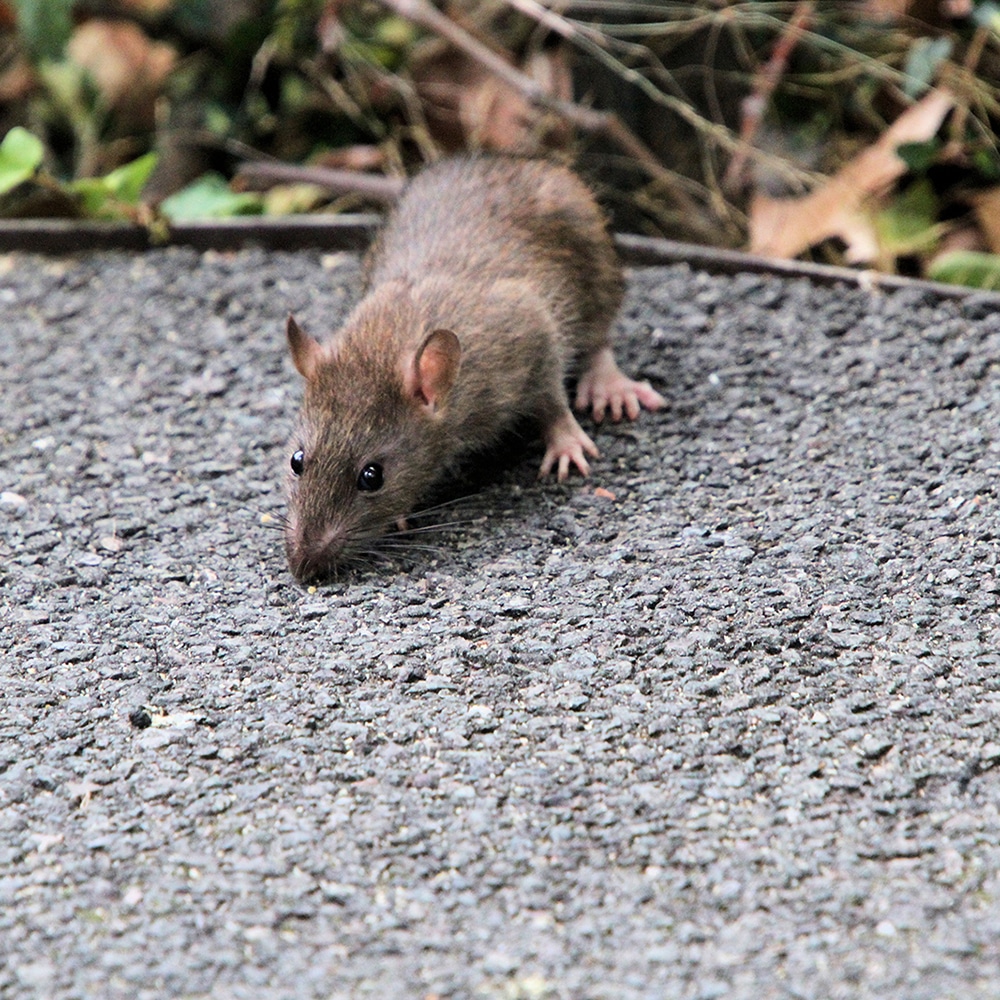
Struggling with rodent infestations? Vital Pest Control offers expert Pest and Insect Identification On The Central Coast NSW.
The Central Coast of NSW is a beautiful region, but it also faces challenges with disease-transmitting rodents. These pests pose serious health risks to residents and businesses. Understanding the types of rodents and the diseases they carry is crucial for effective control and prevention.
Common Rodent Species on the Central Coast
The Central Coast is home to several rodent species, with the most common being the black rat and the brown rat. Black rats are agile climbers, often found in trees and high places, while brown rats prefer underground burrows. Both species are adept at finding food and shelter in urban areas, making them persistent pests.
Diseases Transmitted by Rodents
Rodents are known carriers of various diseases. Leptospirosis, spread through contact with rodent urine, can cause severe illness in humans. Hantavirus, another serious condition, is transmitted through inhalation of rodent droppings. Additionally, rodents can carry salmonella, leading to food contamination.
Signs of Rodent Infestation
Recognising a rodent infestation early can prevent health risks. Look for droppings, gnaw marks, and nesting materials around your property. Unusual pet behaviour, such as heightened alertness, can also indicate rodent presence. Prompt detection allows for quicker response to control measures.
Prevention and Control Measures
Effective rodent control involves a combination of prevention and active measures. Seal entry points in buildings to block access. Keep food storage areas clean and secure. Regular inspections by pest control professionals can help identify and manage infestations before they escalate.
Role of Professional Pest Control Services
Engaging professional pest control services is often the most effective way to handle rodent issues. Experts use targeted treatments and have access to specialised equipment for safe and efficient removal. They provide tailored advice on preventing future infestations, helping maintain a rodent-free environment.
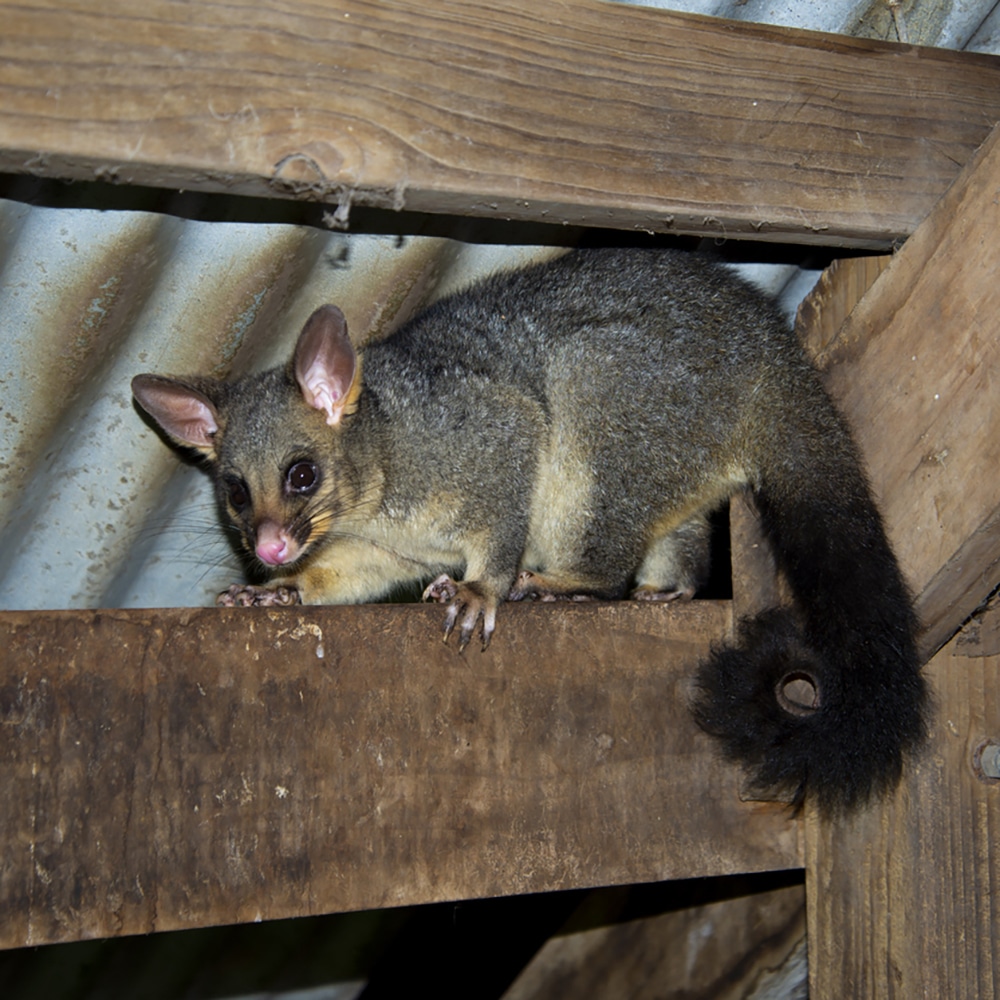
Struggling with possum havoc? Discover how Pest and Insect Identification On The Central Coast NSW can help protect your home.
Possums are a common sight on the Central Coast of NSW. While these creatures might seem harmless, they can cause significant damage to properties, leading to costly repairs. Understanding how to prevent possum damage can save homeowners both time and money. By taking proactive steps, you can enjoy a safer and more peaceful living environment.
Understanding Possum Behaviour
Possums are nocturnal creatures, active mainly during the night. They are skilled climbers, often finding their way into roofs and ceilings. Once inside, they can damage insulation and wiring. Recognising their activity patterns is key to preventing them from making a home on your property. Listening for noises in the ceiling during the night can be an early indicator of their presence.
Securing Your Property
Possums are drawn to easy access points. It’s essential to inspect your home for potential entryways. Check for gaps in the roof, broken tiles, or open vents. Ensure that these are sealed or repaired promptly. By making your home less accessible, you reduce the chance of possums settling in.
Tree Management
Trees provide possums with the perfect launchpad onto your roof. Trim branches that hang over your house to limit their access. Regular pruning not only deters possums but also improves the health of your trees. By maintaining a clear perimeter around your home, you reduce the likelihood of possum damage.
Using Natural Deterrents
Many natural deterrents can help keep possums at bay. Plants like lavender or garlic can discourage possums due to their strong scents. Placing these around your garden can create a natural barrier. Additionally, installing motion-activated lights or sprinklers can startle possums, encouraging them to move on.
Professional Assistance
Sometimes, despite best efforts, possums can still find their way into your home. Hiring a professional possum removal service ensures that the animals are relocated humanely. Experts can also offer advice on further securing your property. Investing in professional assistance can prevent future issues and save on repair costs.
By understanding possum behaviour and taking preventive measures, Central Coast residents can protect their homes from damage. Regular inspections, property modifications, and professional help are all effective strategies in keeping possums at a safe distance. Taking action now will help avoid costly repairs in the future.
Please leave your details in the form and we will call you back the same day.
So that we can process your enquire efficiently please leave as many details as possible and upload any relevant images. (.jpg and .png format)
• Reliable And Trustworthy
• Responsive Proactive Solutions
• Detail-focused for lasting results
We are ready to help you with Cockroaches, Spiders, Ants, Wasps, Fleas, Termites, Rodents, and Possum Relocation.
Call Adam on 0431 222 894 for Responsive Pest Control Services on The Central Coast NSW, Newcastle and The Hunter Valley.
Homeowners Business Owners Shopping Centre Management Real Estate Agents
It may also be an urgent or time-sensitive situation.
If you have questions just reach out to Adam on 0431 222 894 and he’ll be happy to help you.
Wondering what pests you might find in your Australian home? Identifying these critters is the first step in keeping your space pest-free. Let’s dive into the most common household pests in Australia and how to handle them effectively.
Cockroaches
Cockroaches are a familiar sight in many homes, thriving in warm, humid environments. They often scuttle around kitchens and bathrooms. Keeping surfaces clean and storing food properly can deter these pests. Did you know cockroaches can trigger allergies? Regular pest control can help manage them.
Ants
Ants are small but mighty in numbers. They march into homes searching for food, especially sweets and proteins. Sealing entry points and maintaining cleanliness can reduce ant invasions. Fun fact: Ants leave scent trails for others to follow, making it crucial to erase these paths.
Spiders
Australia is home to both harmless and venomous spiders. These arachnids often seek shelter inside during extreme weather. Regularly vacuuming and decluttering can keep spider populations down. Did you know some spiders help control other pests naturally? Keep this in mind when deciding on pest control.
Rodents
Rats and mice can cause significant damage by gnawing on wires and contaminating food. They thrive in cluttered areas. Sealing gaps and proper waste management are essential in prevention. Interesting fact: Rodents reproduce rapidly, making early intervention critical.
Knowing these common household pests and their habits helps in managing them effectively. If you need professional assistance or advice, don’t hesitate to Contact Us for expert pest control solutions.
Want to know how to identify different species of cockroaches? Understanding their unique characteristics can help you manage infestations effectively. Let’s explore some key identifiers to distinguish these common pests.
Size and Shape
Different cockroach species vary in size and shape. For example, the German cockroach is small and slender, while the American cockroach is larger and more robust. Observing these physical differences can help you pinpoint the species lurking in your home.
Colour and Markings
Colour and markings provide valuable clues. The German cockroach often displays light brown hues with two dark stripes, whereas the Australian cockroach has distinctive yellow bands on its wings. Noticing these patterns can guide your identification efforts.
Behaviour and Habitat
Behavioural traits and preferred habitats also aid identification. For instance, the Oriental cockroach favours damp, dark areas, while the Brown-banded cockroach prefers dry, warm locations. Recognising these habits can help in determining the species present.
Wings and Flight
Some cockroach species have wings and can fly short distances. The American cockroach, for example, is a known glider. Not all cockroaches utilise their wings, so noting flight activity can indicate specific species.
Oothecae (Egg Cases)
Examining egg cases, known as oothecae, can reveal the species. The German cockroach’s ootheca is small and brown, while the American cockroach’s is larger and dark. This subtle difference can assist your identification process.
If you’re facing a cockroach problem, identifying the species is the first step towards effective treatment. For expert help, consider reaching out to professionals. Contact Us for more information or to schedule a consultation.
Ever wondered if white ants and termites are the same? You’re not alone. Many Aussies ask this question, especially when protecting their homes. Let’s dive into what sets them apart, offering insights to help you safeguard your space.
What’s in a Name?
White ants and termites often get mixed up because they look similar. In reality, white ants are just another name for termites in Australia. Despite the nickname, they aren’t ants at all. Both names refer to the same wood-loving insects.
Behaviour and Habitat
Termites, or white ants, love munching on wood. They build colonies underground or within wooden structures. Unlike ants, termites don’t have a waist, and their wings are equal in size. They work quietly, causing damage before you even notice.
Protect Your Home
Want to keep your home safe? Regular inspections can prevent costly damage. Check for mud tubes or hollow-sounding timber. If you spot signs, it’s time to act fast. Professional pest control can offer tailored solutions to protect your space.
Keep your home termite-free with expert help. Ready to learn more? Contact Us today.
Some spider species in Australia are best handled by professionals due to their potential danger. Knowing which spiders require expert treatment can help keep your home safe. Let’s explore which ones deserve a closer look and perhaps a call to a pest control expert.
Redback Spider
The redback spider is notorious for its venomous bite. Found in various urban areas across Australia, this species often seeks shelter in garages or sheds. Handling redbacks on your own might not be wise, as they can pose serious health risks.
Funnel-Web Spider
Funnel-webs are among the most dangerous spiders in Australia. Their venom can be life-threatening. These spiders typically inhabit garden areas, but they can also wander indoors. Professional treatment is essential to manage funnel-web infestations safely.
White-Tailed Spider
White-tailed spiders are often blamed for causing skin ulcers, though this is still debated. They prefer hiding in bedding and clothing, making them a nuisance. If white-tailed spiders are frequent visitors, consider seeking professional pest control for peace of mind.
Huntsman Spider
While huntsman spiders are not considered dangerous, their size and speed can be alarming. They often enter homes seeking shelter. If their presence becomes overwhelming, professional treatment can help manage these uninvited guests without harm.
Consider consulting pest control experts for spider concerns in your home. They offer safe and efficient solutions. If you need professional help, Contact Us for expert advice and support.
Wondering if you’ve got a cockroach problem? Spotting the signs early can save you time and hassle. These pesky critters are sneaky, but a few telltale signs can help you identify an infestation before it spirals out of control.
Droppings
Cockroach droppings are a clear sign. They look like black pepper or ground coffee. You’ll find these droppings in corners, cabinets, and other hidden spots. Regularly check these areas, especially if you’ve noticed other signs of cockroach infestations.
Unpleasant Odours
If there’s a musty smell lingering around, it might be due to cockroaches. These insects release a foul odour that intensifies as their numbers grow. If you notice this smell in your kitchen or bathroom, it’s time to investigate further.
Egg Casings
Finding egg casings is another red flag. Cockroach egg casings, or oothecae, are small, brown, and shell-like. They often hide behind appliances or in dark corners. Spotting these means you may be dealing with a breeding population.
Live Sightings
Seeing a cockroach scuttle across your floor is a sure sign. These pests are nocturnal, so spotting them during the day suggests a large infestation. Regular sightings mean it’s crucial to take swift action to manage the situation.
Identifying a cockroach infestation early can prevent bigger issues. If you suspect a problem, don’t wait. Professional help can ensure these pests are dealt with effectively. Contact Us for expert advice and solutions.
Spotting an ant colony nearby can help you tackle potential infestations early. Knowing what to look for is key. Ants may seem small, but they can cause big problems if left unattended. Let’s explore the signs of an ant colony in your vicinity.
Visible Ant Trails
One of the most obvious signs is the presence of ant trails. These tiny workers often march in single file from their nest to a food source. Follow these lines, and you might find the colony’s entrance.
Soil Mounds or Nests
Look for small mounds of soil. Ants often create these structures at the entrance of their nests. The mounds can vary in size depending on the ant species.
Discarded Wings
After mating season, you might notice piles of discarded wings near windowsills or doorways. This indicates that ants have established a new colony nearby.
Increased Indoor Activity
If you suddenly see more ants inside your home, it’s likely a colony is nearby. Ants venture indoors searching for food, especially during warmer months.
If you’re facing an ant issue, it’s essential to act quickly. For professional help, don’t hesitate to Contact Us today for effective pest control solutions.
Spotting European wasps can be tricky, but knowing what to look for helps. These pests are more aggressive than bees, and identifying them early can prevent infestations. Keep reading to learn how to spot European wasps around your home or garden.
Identifying European Wasps
European wasps are similar to bees but have a sleeker body. Look for a black and yellow pattern, with black antennae. They are often seen flying around food or drink and have a tendency to hover, unlike bees which are usually busier.
Signs of a Nest
Look for nests in sheltered spots like wall cavities, roof spaces, or tree hollows. Nests often have a papery look and can grow large quickly. Hearing a constant buzzing sound in these areas might also indicate a hidden nest.
Behaviour Patterns
European wasps are aggressive, especially when disturbed. They often gather around sweet foods and drinks, so watch for increased activity in these areas. They’re more active in warm weather, usually between spring and late summer.
What to Do Next
If you suspect a European wasp problem, it’s wise to contact professionals. Attempting to remove a nest yourself can be dangerous. For expert help, Contact Us to ensure a safe and effective solution.
Insects might seem pesky, but many are actually beneficial. These helpful creatures play essential roles in ecosystems and gardens. Curious about which insects to welcome into your space? Let’s explore some of nature’s tiny heroes.
Pollinators
Bees and butterflies are the stars of pollination. Without them, our gardens would lack vibrant flowers and tasty fruits. Encouraging these insects can boost plant health and yields. Consider planting native flowers to attract them naturally.
Pest Controllers
Lacewings and ladybirds are natural predators of aphids and other harmful bugs. These insects help control pest populations, reducing the need for chemical pesticides. By providing a habitat for them, you can maintain a balanced garden ecosystem.
Soil Aerators
Earthworms might not be flashy, but they aerate and enrich soil. Their tunnelling improves drainage and nutrient flow, promoting healthier plant growth. Composting can attract earthworms, turning kitchen scraps into garden gold.
Want to enhance your garden with these beneficial insects? Let’s chat about eco-friendly pest control solutions. Contact Us today for expert advice.
Curious about which household insects are harmless? Many of these tiny creatures are more beneficial than bothersome. Knowing the difference can save you stress and unnecessary pest control. Let’s dive into the world of harmless household insects and what makes them tick.
Common House Spiders
Most house spiders are harmless and help control other insect populations. They prefer to stay out of sight, weaving webs to catch flies and mosquitoes. If you find one, it’s usually best to leave it be, as it helps keep your home free from more annoying pests.
Ladybugs
Ladybugs are not only harmless but also beneficial. They feast on aphids and other garden pests, acting as natural pest control. Spotting ladybugs indoors is a sign that they’re keeping your outdoor plants healthy. Gently relocate them outside if they wander in.
Silverfish
While their appearance can be startling, silverfish are harmless to humans. They prefer damp areas and feed on starchy materials. Keeping your home dry and clean can help manage their numbers. Despite their unappealing look, they don’t bite or spread disease.
Pill Bugs
Pill bugs, or roly-polies, are harmless crustaceans often mistaken for insects. They thrive in moist environments and play a role in decomposing organic matter. If they venture inside, they’re easy to remove and pose no threat to your household.
Understanding which insects are harmless can bring peace of mind and help you manage your home more effectively. For more insights or assistance with pest control, feel free to Contact Us today.
Wondering how to spot wood-boring insects in your home? These pests can cause significant damage to timber structures. Identifying them early is crucial. Let’s explore the signs to watch for and how to tackle these unwelcome guests.
Visible Damage
Keep an eye out for small holes in wood surfaces. This is a common sign that wood-boring insects have made themselves at home. You might also spot frass, a powdery substance, which is essentially the insect’s droppings mixed with wood shavings.
Sounds in the Wood
If you suspect wood-boring insects, listen closely. You might hear tapping or clicking noises. These sounds come from insects munching through wood. This could mean a more extensive infestation, so it’s wise to act quickly.
Weakened Wood
Check for areas where wood seems weak or crumbles easily. This can indicate internal damage caused by larvae tunnelling through. It’s a red flag that requires immediate attention to prevent further structural damage.
Presence of Adult Insects
Spotting adult beetles or insects on or near wood could signal an infestation. Keep in mind that the larvae do the most damage, so seeing mature insects might mean the problem is already well underway.
Regular inspections and early detection can save your property from costly repairs. If you suspect a wood-boring insect problem, don’t wait. Contact Us for expert help and safeguard your home today.
Need Some Advice From A Professional Pest Technician?